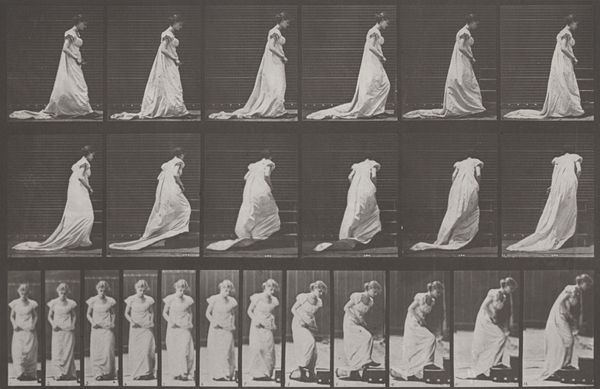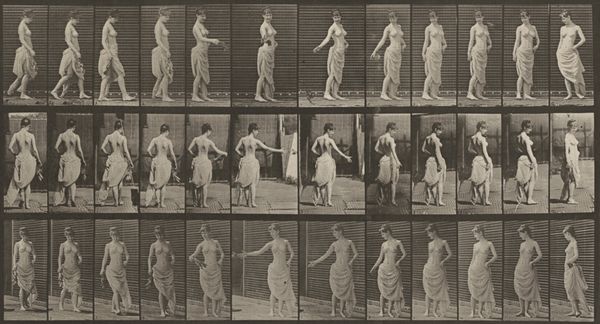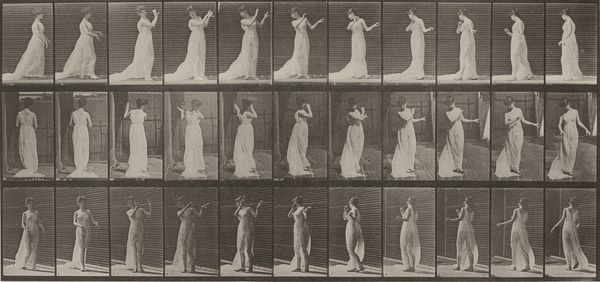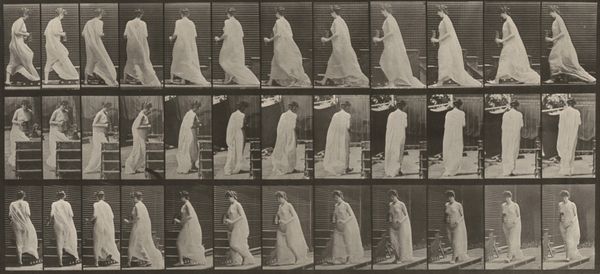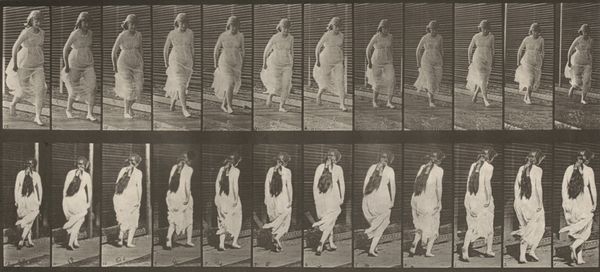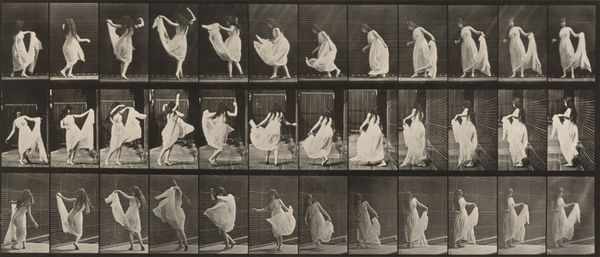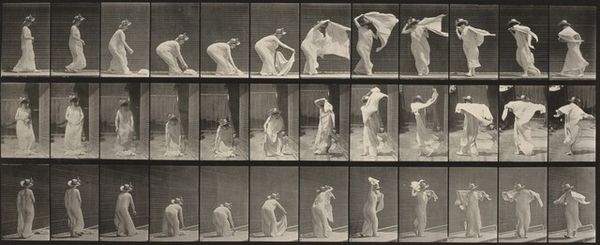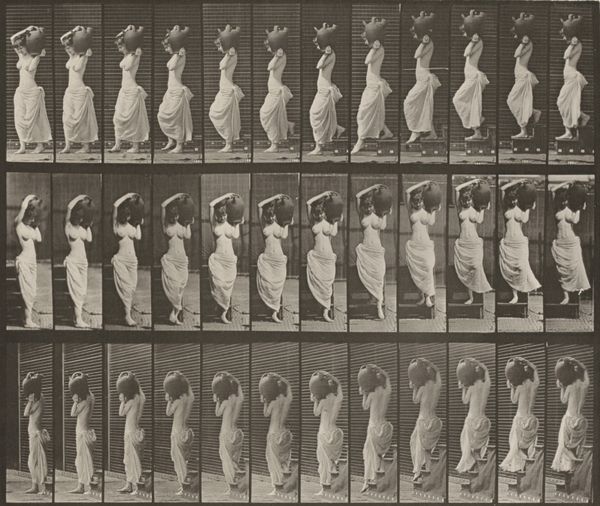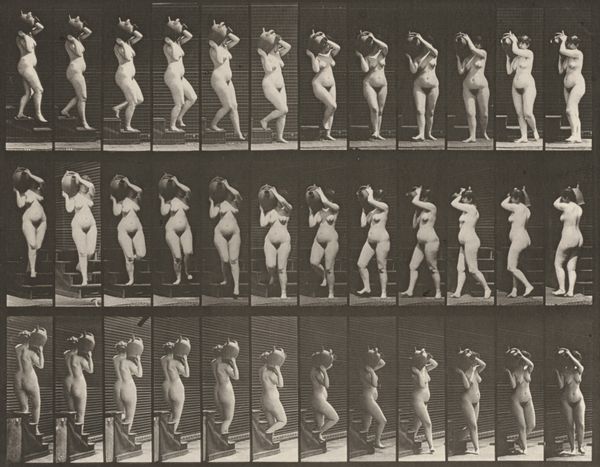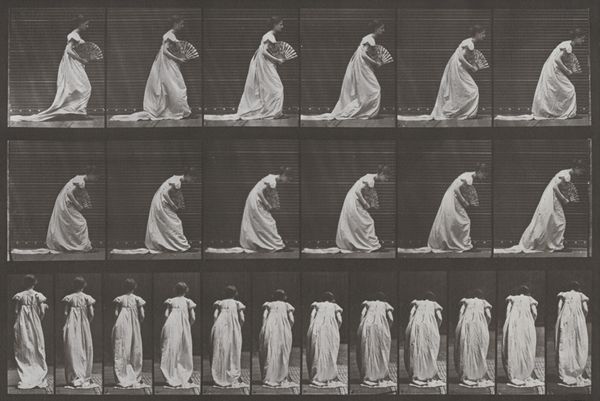
Plate Number 56. Walking, turning and stooping to lift train 1887
0:00
0:00
print, photography, gelatin-silver-print
#
action-painting
#
portrait
# print
#
photography
#
gelatin-silver-print
Dimensions: image: 17.55 × 43.2 cm (6 15/16 × 17 in.) sheet: 47.6 × 60.2 cm (18 3/4 × 23 11/16 in.)
Copyright: National Gallery of Art: CC0 1.0
Curator: This is "Plate Number 56. Walking, turning and stooping to lift train," a gelatin silver print by Eadweard Muybridge, created in 1887. Editor: What strikes me is the stark simplicity—the grid, the neutral background, the sequential capture. It gives off a clinical, almost detached, vibe, despite depicting such a basic human action. Curator: Indeed. The essence lies in its construction. Muybridge dissected movement into its most fundamental components, presented through serial photography. The rigorous arrangement, that grid you noticed, offers an analytical framework. Editor: And yet, it inevitably evokes cultural symbolism, perhaps unintentionally. The repeated image of a woman lifting her skirt reminds us of gesture, civility, and maybe the restrictive customs placed upon women during that period. Curator: The attire certainly presents a formal layer, an intentional encoding. It contrasts markedly with her subsequent state in the series; observe the complete stripping of layers as the experiment continues, leading to total, anatomical, visibility. What is signified? Scientific objectivity? Or societal exposure? Editor: It’s a complex question, as the bare form may not appear merely objective. Historically, the removal of the dress may have signified the absence of artificiality—an embrace of ‘naturalness.’ Still, the arrangement calls attention to an explicit display of feminine anatomy for the purpose of "science". Curator: Note how the frame is almost sculptural. Each frame reveals the body not merely as form but as material molded by gravitational force and muscular energy. Consider the balance between positive and negative spaces; how light sculpts each phase of the movement. Editor: Ultimately, the images carry cultural significance, touching on not just representations of body but notions of evolution and ‘progress’. The photographs, then, reveal that which is typically absent or unnoticed—every step, every micro-motion. Curator: It compels us to consider what scientific observation truly reveals and the visual frameworks we use to construct "objective" knowledge. Editor: Precisely. Muybridge leaves us with multiple viewpoints on movement and the burdens imposed by convention. A glimpse into the past, rendered through careful artistic analysis.
Comments
No comments
Be the first to comment and join the conversation on the ultimate creative platform.

